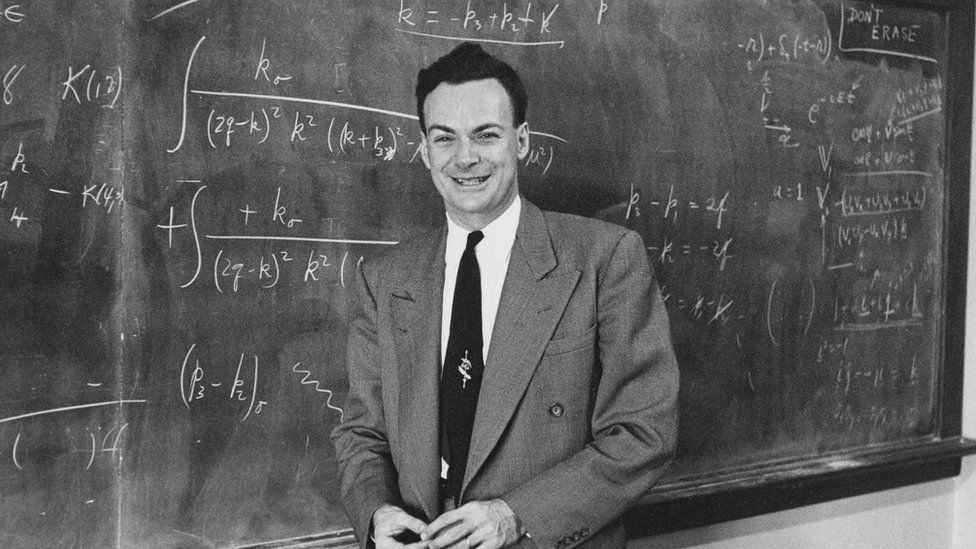nanotech + art
The captivating realm where science meets art is exemplified by the intersection of nanotechnology and artistic expression. Nanotechnology, the manipulation of matter at the nanoscale, has emerged as a groundbreaking field with applications spanning various industries. People such as Richard Feynman, K. Eric Drexler, and Smalley were pioneers in this field. Additionally, I found the fascinating use of nanoparticles in food to particularly catch my attention during recent lectures. While nanotech should be recognized for its vast potential, it should also be approached with a hint of skepticism, acknowledging the need to investigate potential risks associated with the field.
 |
| Richard Feynman - a pioneer of the field of nanotechnology |
Richard Feynman, a visionary physicist, set the stage for nanotechnology with his famous speech, "There's Plenty of Room at the Bottom." Feynman speculated on the manipulation of matter at the atomic level before the advent of nanotechnology itself. Building on Feynman's ideas, K. Eric Drexler proposed an engineering approach to nanotechnology, envisioning assemblers in his influential book, "Engines of Creation." The contributions of Smalley, renowned for his work on carbon nanotubes, also deserve recognition in this narrative.
One particularly fascinating aspect of nanotechnology lies in its application within the food industry. Nanoparticles, sized between 100 and 1 nanometer, have found their way into a variety of food products. For instance, the Lycurgus cup, an ancient Roman artifact from 400 AD, showcases the use of nanosized gold to create stunning color-changing effects. Furthermore, nanoparticles have been employed to create hydrophobic surfaces, self-cleaning fabrics, and glass coatings, revolutionizing the culinary experience.
/https://tf-cmsv2-smithsonianmag-media.s3.amazonaws.com/filer/phenomenon-Glow-With-Flow-631.jpg) |
| Lycurgus cup |
While the potential of nanotechnology in art and food is undeniably captivating, it is crucial to approach this subject with a healthy dose of skepticism. The use of nanoparticles in food raises concerns about their long-term effects on human health and the environment. Ethical questions arise regarding the extensive surveillance throughout the food supply chain and the potential manipulation of seeds using nano-biotechnology. It is imperative to carefully evaluate the potential risks associated with these advancements to ensure the responsible and safe integration of nanotechnology.
.jpg) |
| Nanotechnology making its appearance in the food industry, should we be excited or concerned? |
The intersection of nanotechnology and art represents a captivating fusion of scientific progress and creative expression. The visionary contributions of Richard Feynman, K. Eric Drexler, and Smalley have laid the foundation for exploring the immense potential of nanotechnology. The incorporation of nanoparticles into the culinary world has transformed the possibilities for visual aesthetics and functional enhancements in food. However, it is important to approach this field with a critical eye, considering the potential risks and ethical implications associated with the integration of nanotechnology in our daily lives.
Citations:
Feynman, Richard P. "There's Plenty of Room at the Bottom." Caltech Engineering and Science 23.5 (1960). http://www.feynman.com/science/nanotechnology/.
"Nanotechnology in Food." UnderstandingNano.com. [May 22, 2023]. https://www.understandingnano.com/food.html.
"Lycurgus Cup." ScienceDirect, [May 22, 2023]. www.sciencedirect.com/topics/engineering/lycurgus-cup.
Sekhon, B. “Food nanotechnology – an overview”. National Center for Biotechnology Information, U.S. National Library of Medicine [May 4, 2010]. https://www.ncbi.nlm.nih.gov/pmc/articles/PMC3781769/#:~:text=The%20term%20'nanofood'%20describes%20food,manufactured%20nanomaterials%20have%20been%20added.&text=Nanofood%20has%2C%20in%20fact%2C%20been,naturally%20exist%20at%20the%20nanoscale.
Amini, S., Gilaki, M., Karchani, M. “Safety of Nanotechnology in Food Industries”. National Center for Biotechnology Information, U.S. National Library of Medicine. [Nov 27, 2014]. https://www.ncbi.nlm.nih.gov/pmc/articles/PMC4324265/
Science Photo Library. Estate of Francis Bello. [1954]. https://www.sciencephoto.com/media/225111/view
The Trustees of the British Museum. Art Resource, NY. https://www.britishmuseum.org/collection/object/H_1958-1202-1
AZoNano.https://www.azonano.com/article.aspx?ArticleID=5496.

Hi Leeza! I really enjoyed reading your blog post this week. I liked how you talked about how nanotechnology bridges the gap between science and art, and the many applications of nanotechnology. I also liked how although you recognized the benefits of the technology, you also acknowledged the potential harmful outcomes and that we should approach the technology with skepticism. Your discussion about the application in the food industry really brings to light how the very small size can also show harmful effects, as humans have to worry about the effect on our health and the environment since these particles can sneakily travel into our food. The Lycurgus cup was also a really fascinating implication of nanotechnology! Keep up the great work!
ReplyDeleteHey Leeza, really enjoyed reading your blog and the explanations of the history of nanotechnology and its pioneers. It was interesting to read your discussion of the usage of such technologies in food and how it must be approached through an ethical lens. It would be very exciting to see the incorporation of nanotechnology in the culinary world and how they can transform culinary and cultural experiences!
ReplyDelete